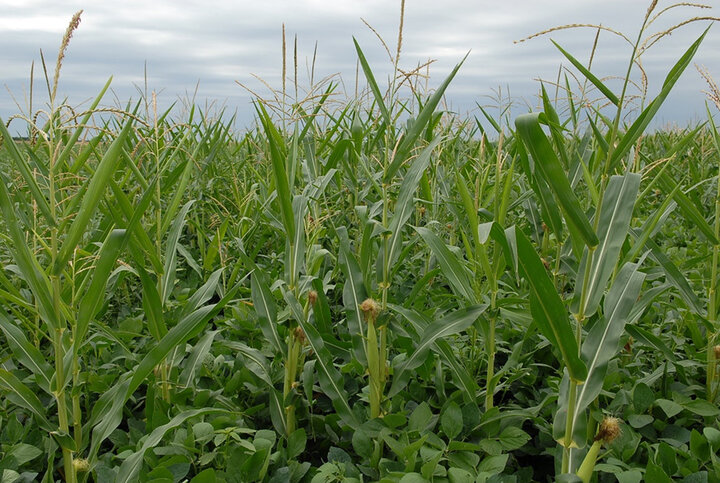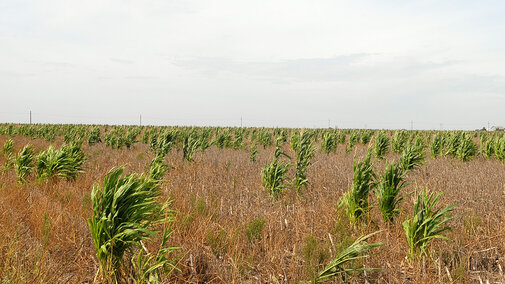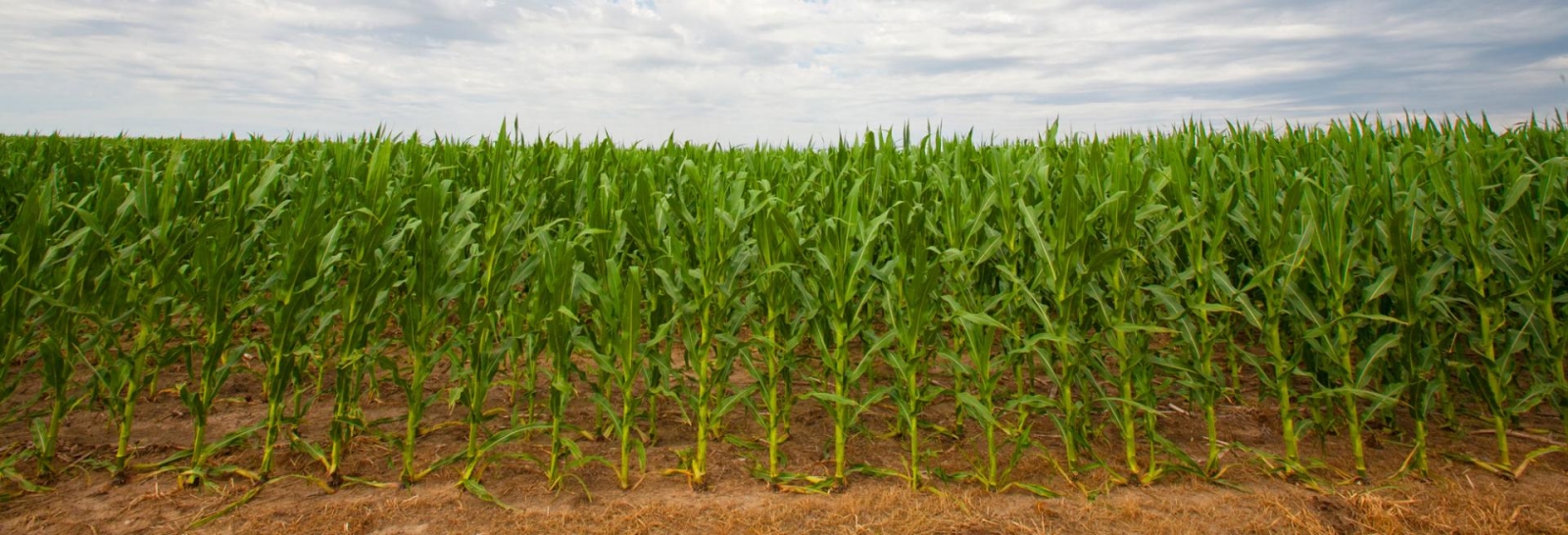Research Highlights
Harvest losses in Nebraska corn fields are more common — and costly — than many realize.
Lost kernels often result in volunteer corn infestations the following season, impacting yield and weed control.
Even small losses can limit crop rotation options and drive up herbicide costs.
Checking harvest efficiency and planning for volunteer management can protect both yield and input investment.
Corn is one of Nebraska’s most important crops, with more than 10 million acres planted each year. Despite advances in hybrid performance and harvesting technology, harvest loss remains an unavoidable reality. While a few scattered kernels may not seem consequential at first glance, these lost seeds often lead to significant volunteer corn infestations the following year, posing serious agronomic and economic challenges in corn-soybean and other rotational systems (Figure 2). Nebraska has about 3.5 million acres under corn after corn rotation. Management of volunteer corn in corn is a challenge (Figure 3).
Our recent multi-county study in Nebraska highlights the extent of corn harvest losses and how these losses directly relate to volunteer corn infestation in subsequent seasons. The findings not only provide a benchmark for expected harvest loss in Nebraska conditions, but also serve as a call to action for growers to proactively manage both their harvesting operations and post-harvest control strategies.

Why Harvest Loss Matters
Corn harvest loss can be categorized into pre-harvest and mechanical losses. Pre-harvest loss results from extreme weather events like hailstorm and high winds, green snap or stalk rot causing ears to drop before harvest. Mechanical loss typically occurs at the combine due to improper settings or operator error, with kernels lost at the header, threshing unit or during grain separation.

Even relatively minor harvest losses translate to significant seedbanks of viable corn. If not effectively controlled, these volunteer corn plants compete with the following crop for light, water, space and nutrients, ultimately reducing yield. In soybean, for example, as little as one volunteer corn plant per 10 ft2 has been shown to reduce yield by up to 22% (Chahal and Jhala 2016).
Moreover, volunteer corn can complicate insect resistance management. It may serve as a host for pests such as corn rootworm or fall armyworm, undermining the value of Bt traits and increasing insecticide reliance.
Nebraska Study: Scope and Methods
To understand real-world harvest loss and its implications, we conducted a two-year study (2020 and 2021) across 47 commercial corn fields in south-central and southeastern Nebraska. Commerical corn fields were located in six counties: Clay, Fillmore, Hamilton, Lancaster, Seward and York.
From each field, 16 post-harvest samples were collected in a “W” pattern using a 20x20-inch quadrat to count lost kernels. Additional data such as yield, hybrid, irrigation status and nitrogen use were recorded from growers. Collected kernels were dried, weighed and tested in laboratory conditions for germination after mimicking winter storage.
Key Results
- Average harvest loss was 8.3 bu ac–1 (1.5% of average yield) in 2020, and 4.4 bu ac–1 (0.7% of average yield) in 2021.
- There was no correlation between harvest loss and yield, hybrid, irrigation status or nitrogen rate.
- While average loss in both years remained below 2%, some fields experienced losses exceeding 1,350 bu ac–1, especially where green snap or wind damage occurred prior to harvest.
- In 2020, the average corn harvest loss was approximately 6.3 kernels ft–2. Whereas in 2021, the loss averaged 3.1 kernels ft–2.
- The laboratory germination rate of the collected corn kernels was 51%, indicating that about half of the lost kernels had the potential to emerge as volunteer corn in the following season. This means potential volunteer corn densities of 3.1 plants ft–2 in 2020 and 1.5 plants ft–2 in 2021.
Real-World Implications for Growers
Corn harvest loss represents a “double hit” — economic loss from reduced yield and future crop yield drag due to volunteer corn. In addition to yield impact, managing volunteer corn increases herbicide costs and narrows crop protection options, especially as stacked herbicide-resistant hybrids become more common.
The study underscores three actionable areas for growers:
Monitor Corn Harvest Efficiency
Conduct loss checks behind the combine to quantify dropped kernels. Adjustments to header height, rotor speed, sieve clearance and forward speed can substantially reduce harvest loss. Even experienced operators can benefit from periodic recalibration and field-specific adjustments.
Plan for Volunteer Corn Management
Knowing the number of lost kernels per square feet helps predict volunteer pressure. In fields with high corn harvest loss, integrating cultural, mechanical and chemical control — including tillage or herbicides — become essential.
Crop Rotation for Volunteer Corn Management
Incorporating crop rotation offers greater flexibility in managing volunteer corn. Continuously planting corn limits herbicide choices for volunteer control, but rotating to a different crop, such as soybean, opens opportunities to use alternative herbicide modes of action. For example, in a corn-soybean rotation, grass killing herbicides such as Assure II, Fusilade, Fusion, Poast, Select Max, can be applied post-emergence in soybean to effectively control volunteer corn.
Scout Early
Volunteer corn in soybean, dry beans or sugarbeet may harbor corn pests or interfere with Bt insect resistance management plans. Scout early and tailor your herbicide programs to ensure timely and effective control. Early-season control can reduce competition of volunteer corn with crop.
Looking Ahead
This is the first study from Nebraska that quantifies corn harvest loss and its link to volunteer corn emergence in commercial production systems. While average losses might seem manageable, individual fields can vary widely depending on hybrid, weather, harvest timing and machinery setup. Volunteer corn infestations of 1.5–3 plants ft–2 are enough to compromise yield and pest control plans in soybean, sugarbeet, dry bean, and even corn-on-corn rotations.
Producers can use these benchmarks to evaluate their own operations and take steps to reduce corn kernel loss and its long-term impacts. Reducing harvest losses not only improves economic returns but also contributes to more sustainable weed management in Nebraska cropping systems.
References
Stephens T, Kumar V, Rees J, Jhala AJ (2024) Harvest loss in corn and implication for volunteerism. Weed Technology 38(e48):1–5.
Chahal PS, Jhala AJ (2016) Impact of glyphosate-resistant volunteer corn (Zea mays L.) density, control timing, and late-season emergence on yield of glyphosate resistant soybean (Glycine max L.). Crop Protection 81:38−42.

